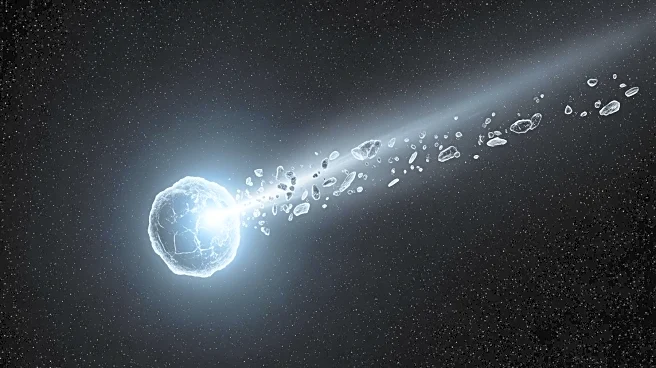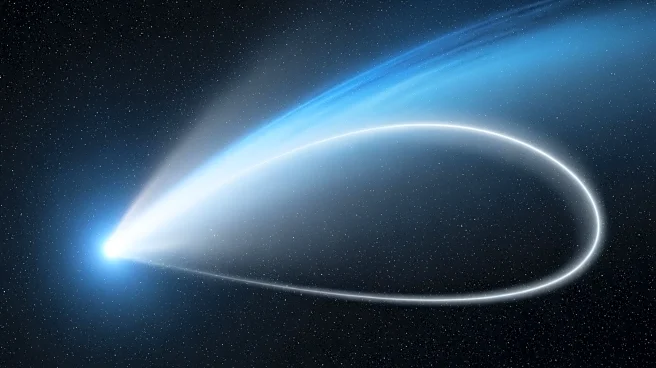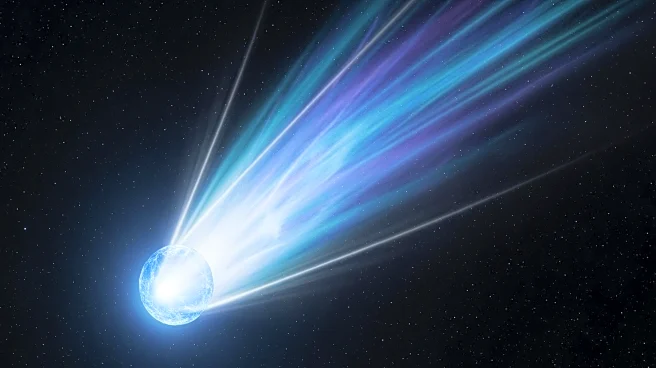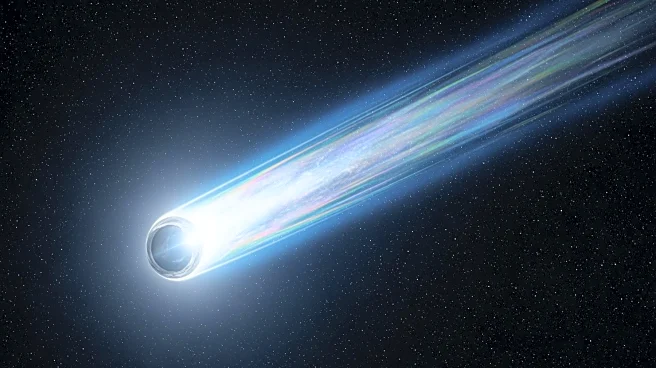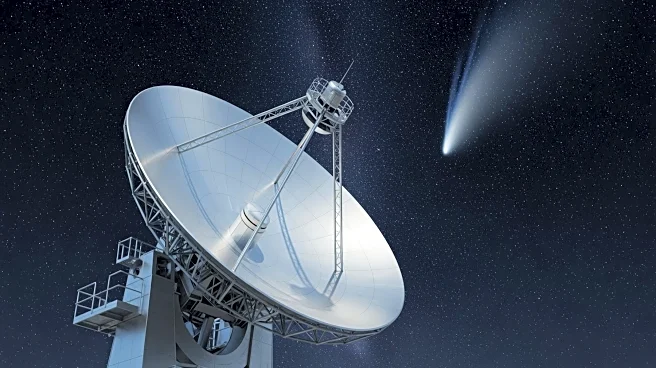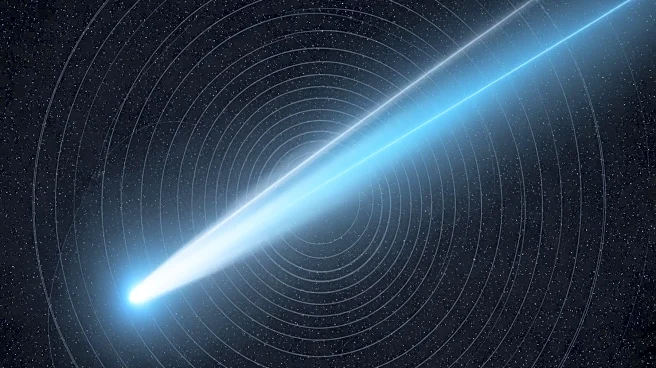What's Happening?
Harvard astrophysicist Avi Loeb has been examining the interstellar comet 3I/ATLAS, which is exhibiting unusual disintegration patterns. Observations have shown that the comet's tail reappeared after disappearing,
suggesting a complex disintegration process. Loeb has proposed that the comet's mass loss and the orientation of its jets indicate a sophisticated disintegration mechanism, possibly due to its close passage near the Sun. This proximity has led to significant sublimation and fragmentation of the comet. The comet's behavior has raised questions about its structural integrity and the forces acting upon it.
Why It's Important?
The disintegration of 3I/ATLAS is significant as it provides insights into the behavior of interstellar objects when they pass close to the Sun. Understanding these processes can help scientists predict the behavior of similar objects and assess potential risks they may pose. The comet's unusual characteristics, such as its sunward and anti-solar jets, challenge existing models of cometary behavior and may lead to new theories about the composition and dynamics of interstellar comets. This research could have implications for future space exploration and the study of celestial bodies.
What's Next?
Further observations and data collection are expected in the coming weeks, which will help refine the understanding of 3I/ATLAS's behavior. Scientists are looking to measure the speed, composition, and mass flux of the jets to determine if they are consistent with natural cometary activity or if they suggest a non-natural origin. The results could lead to adjustments in the Loeb Scale, which ranks the likelihood of technological origins for celestial phenomena. Continued monitoring will be crucial to uncovering more about this comet's nature.
Beyond the Headlines
The study of 3I/ATLAS raises broader questions about the nature of interstellar objects and their potential technological origins. Loeb's suggestion of technological thrusters preserving jet orientation opens discussions about the possibility of advanced extraterrestrial technology. This could shift paradigms in astrophysics and influence how scientists approach the study of interstellar phenomena. Ethical considerations about the search for extraterrestrial life and technology may also arise, impacting scientific priorities and funding.
